Connect to Azure SQL Data Warehouse data source
The Bold Reports® allows you to connect with Azure SQL Data Warehouse database to visualize and analyze the data in reports.
How to create Azure SQL Data Warehouse data source
To configure the Azure SQL Data Warehouse data source, follow these steps:
- Click on the Data icon in the configuration panel.
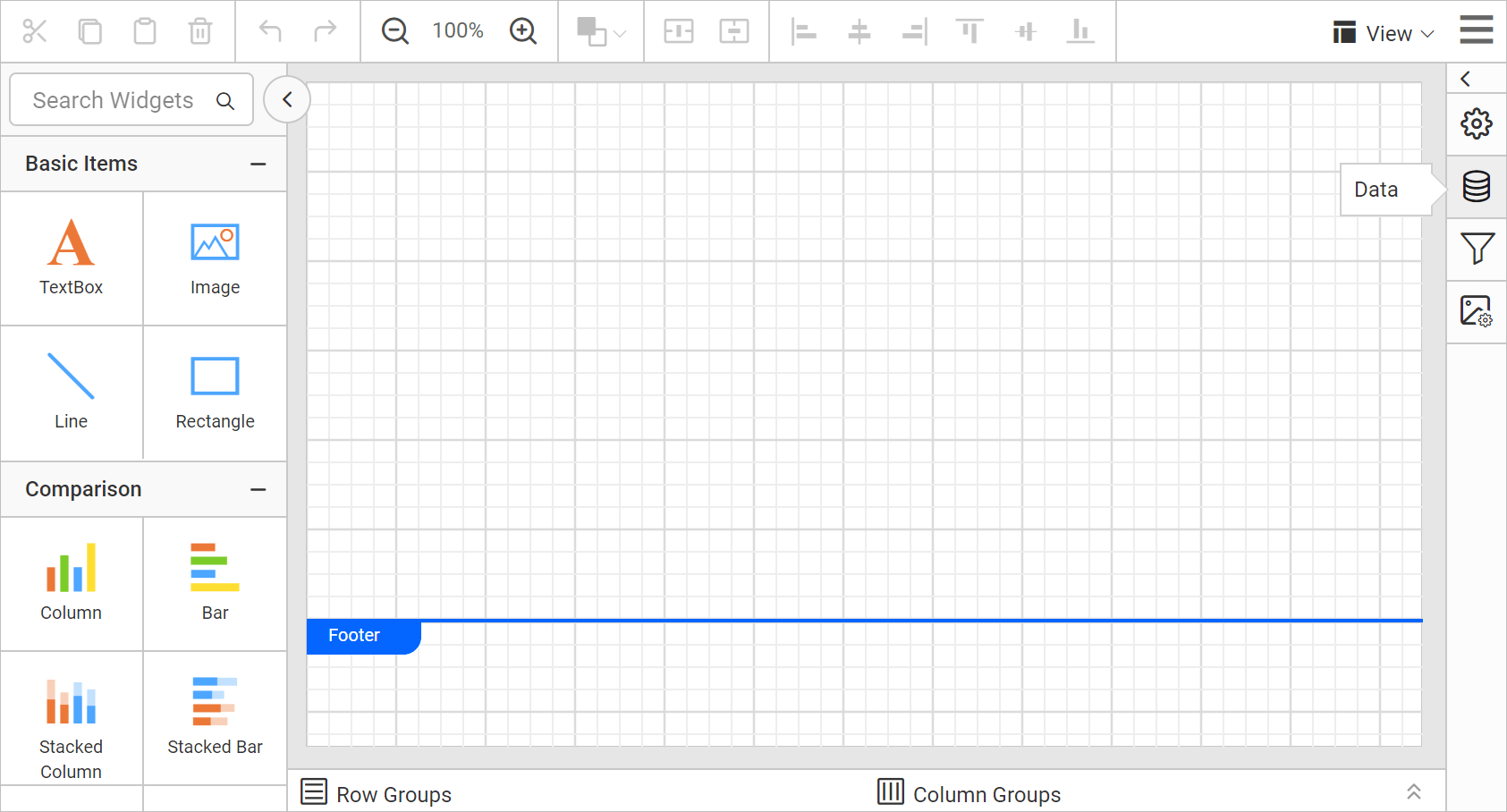
- In the
DATAconfiguration panel, click on theNEW DATAbutton.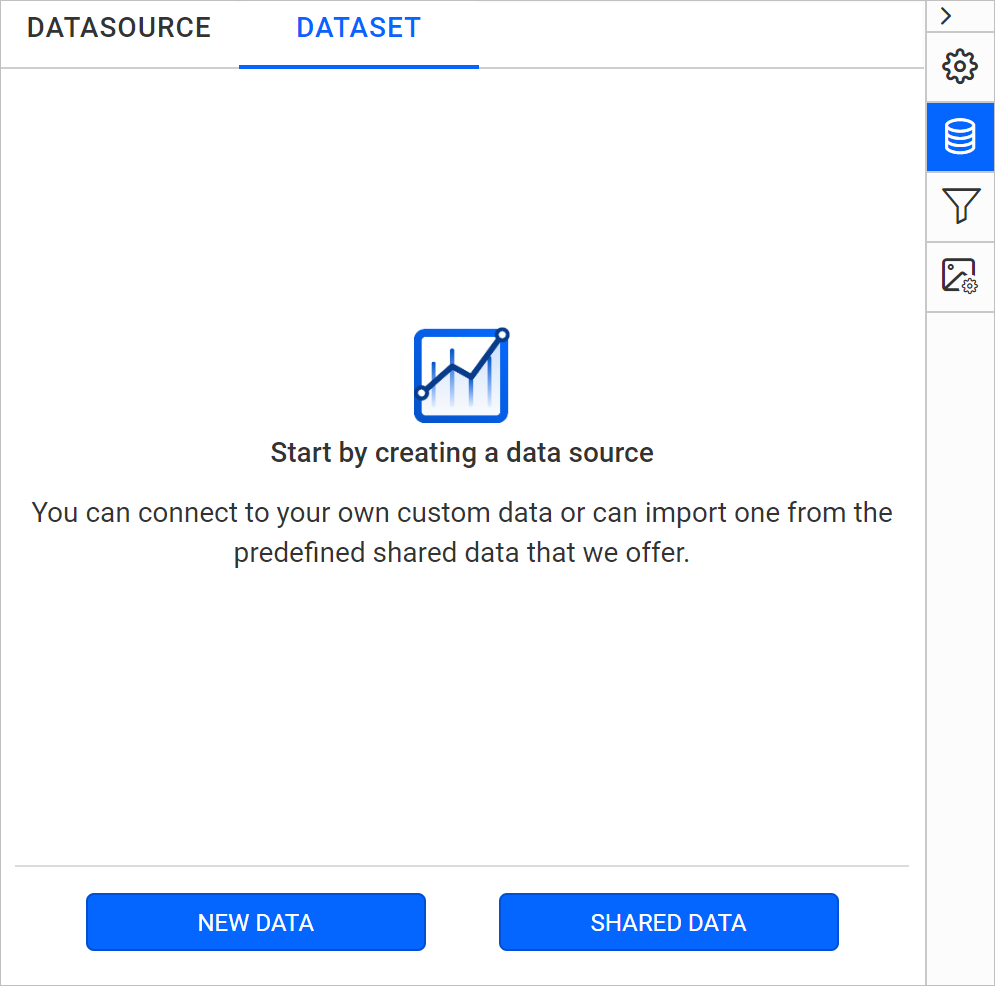
- In the connection type panel, choose the
Azure SQL Data Warehousedata source type.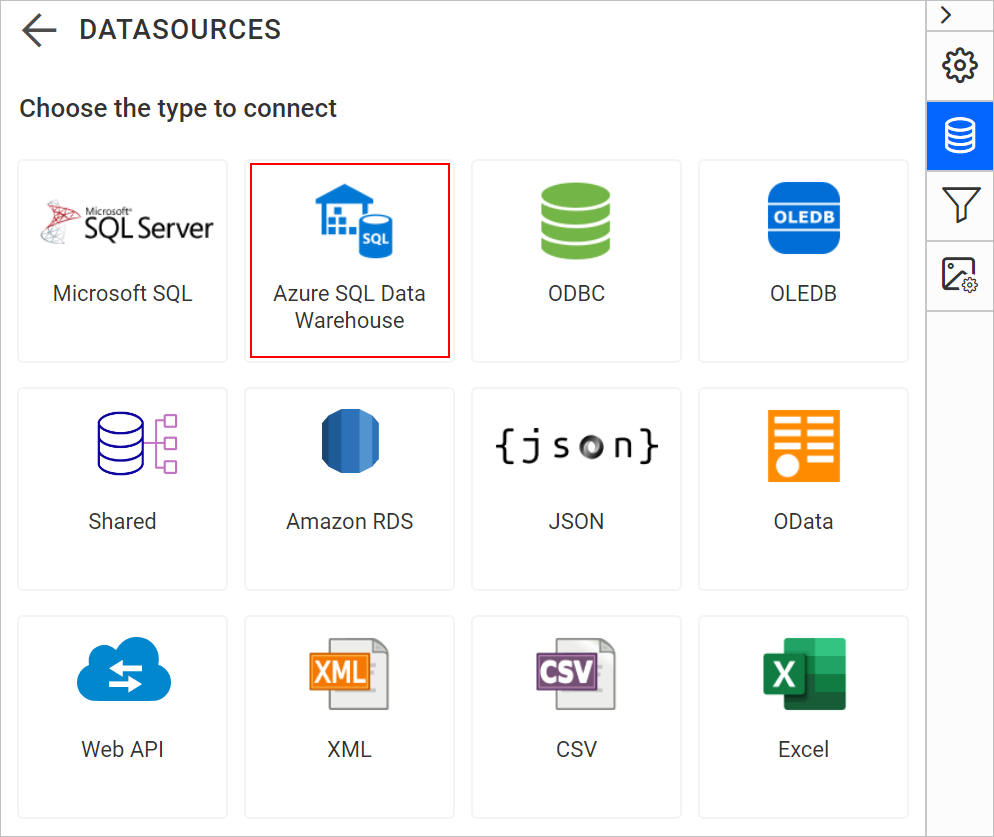
Create Azure SQL Data Warehouse data source with basic options
When you create a new data, the NEW DATASOURCE panel will show up with basic options,
- Specify the data source name without special characters, in Name field.
- Enter a valid Azure SQL Data Warehouse server or host name in the Server Name field.
- Enter a valid Azure SQL Data Warehouse username in the UserName text box.
- Enter a valid Azure SQL Data Warehouse password in the Password text box.
- Select a database that you want to query in the listed database associated with the given Azure SQL Data Warehouse server in the database combo box.
- Configure the
EncryptandTrust Server Certificateoptions based on your SQL Server configuration. - Click on the
Connectto connect the Bold Reports® with Azure SQL Data Warehouse server database.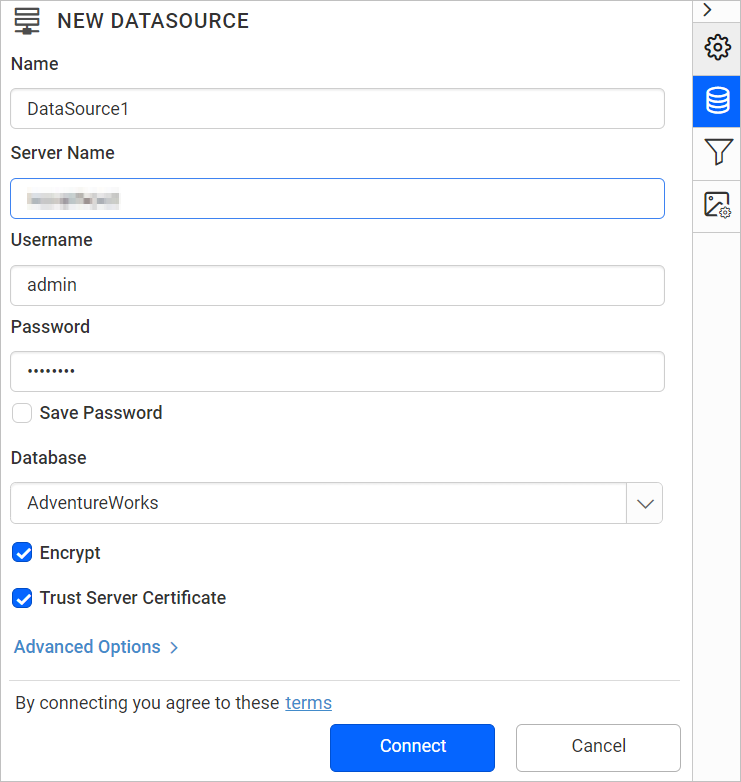
- Drag and drop the table from the table schema in the query design view page.
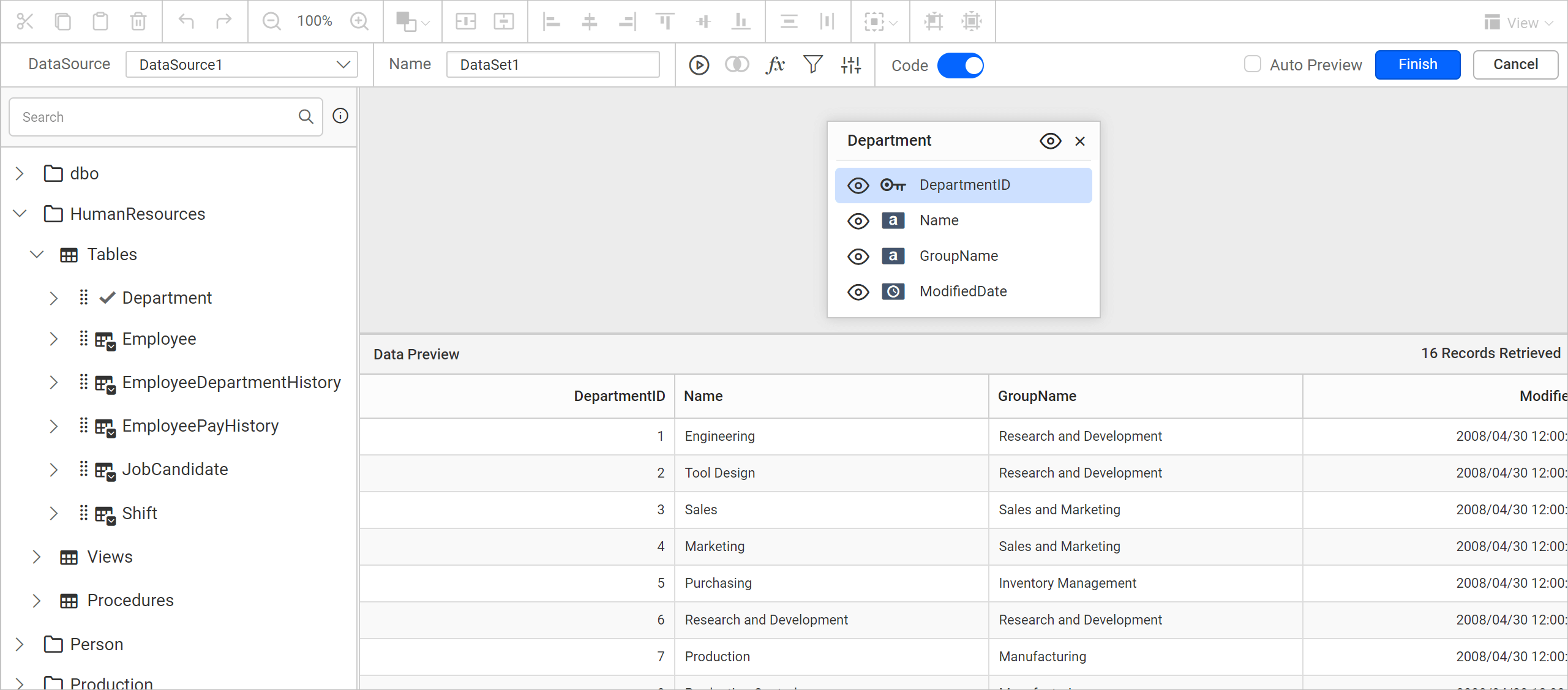
- Click
Finishto save the data source with a relevant name to proceed with designing report.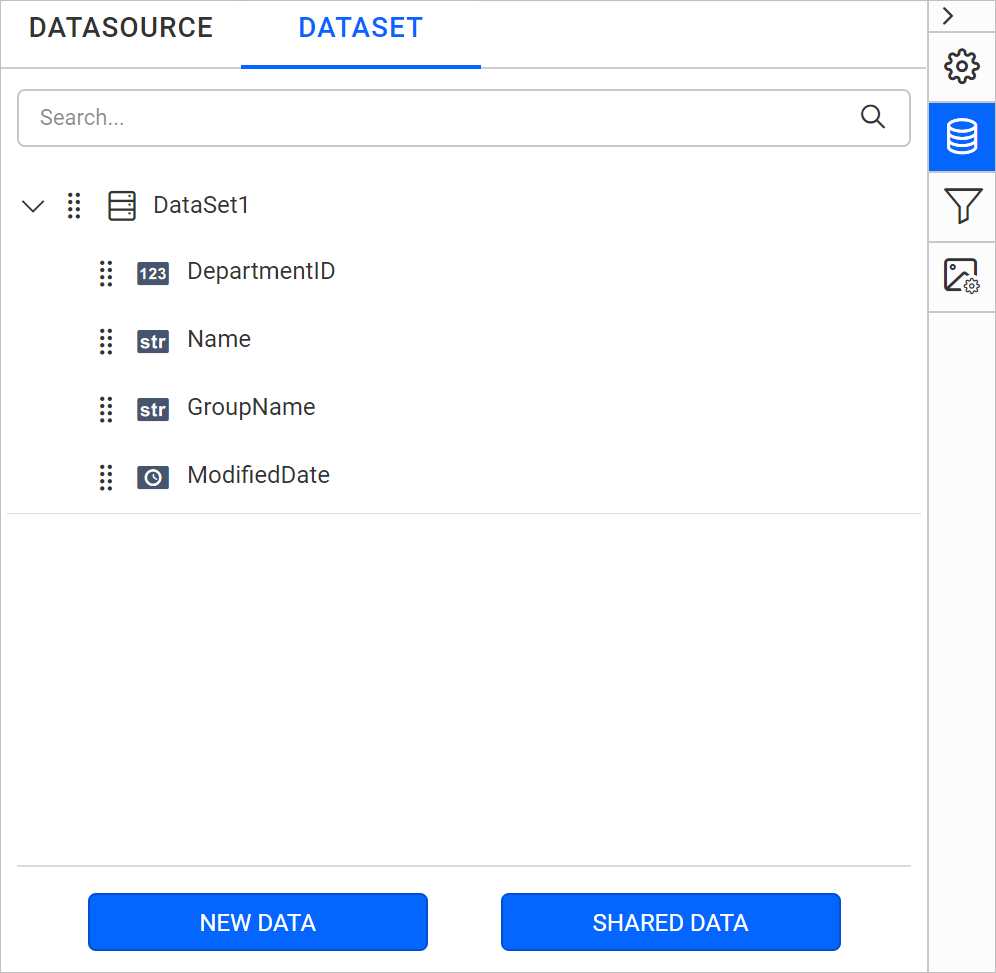
Enable the Save password option to embed the credentials within the report when saving it in Report Server.
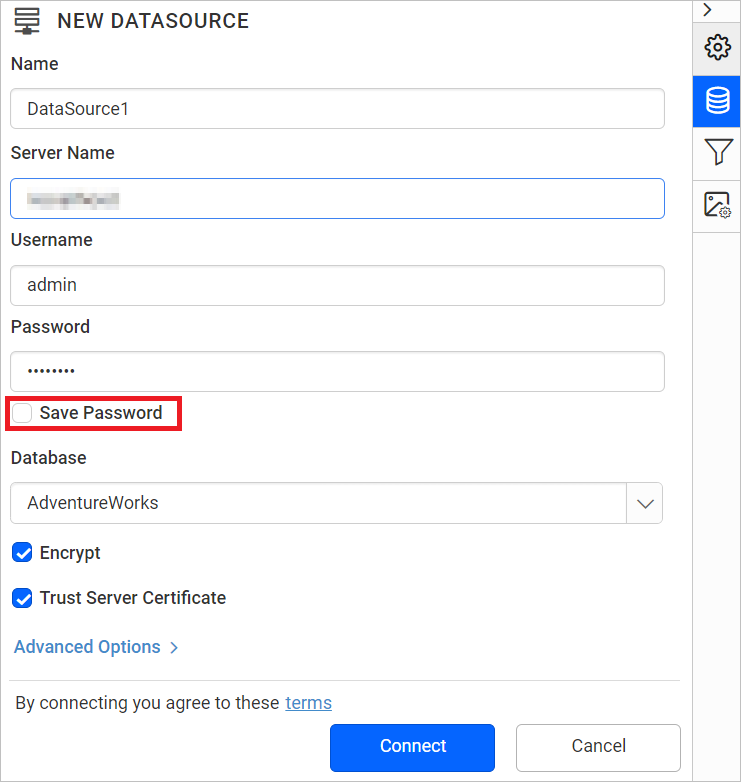
On report download action, the credentials will be not be saved with report data.
Create Azure SQL Data Warehouse data source with advanced options
To connect the Azure SQL Data Warehouse database with advanced options, click on the Advanced Options in New Data panel.

Now, the panel is switched to advanced options. In advanced options, you can build your own connection string.
Set the connection string and authentication type as required and click on Connect.
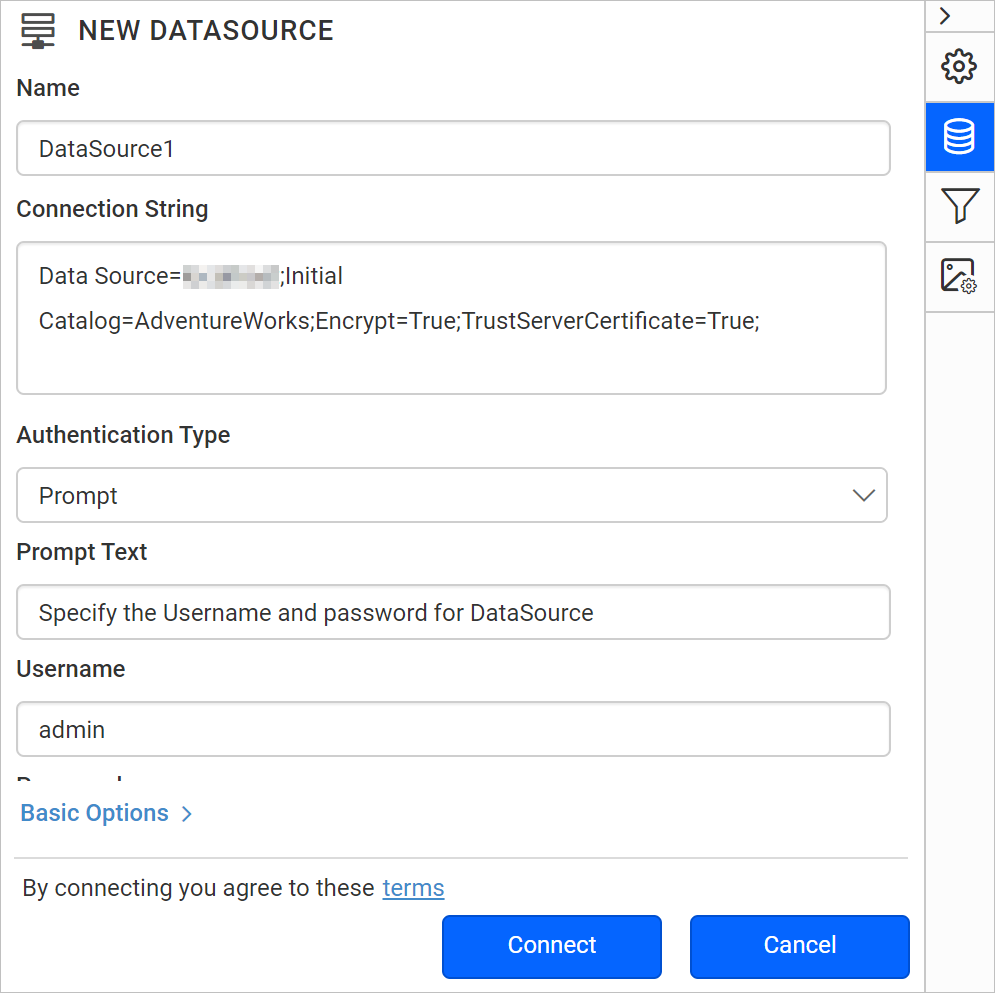
Drag and drop the table from the table schema in the query design view page.

Click Finish to save the data source with a relevant name to proceed with designing report.

Click on
Basic Optionsto switch back to the basic connection settings.
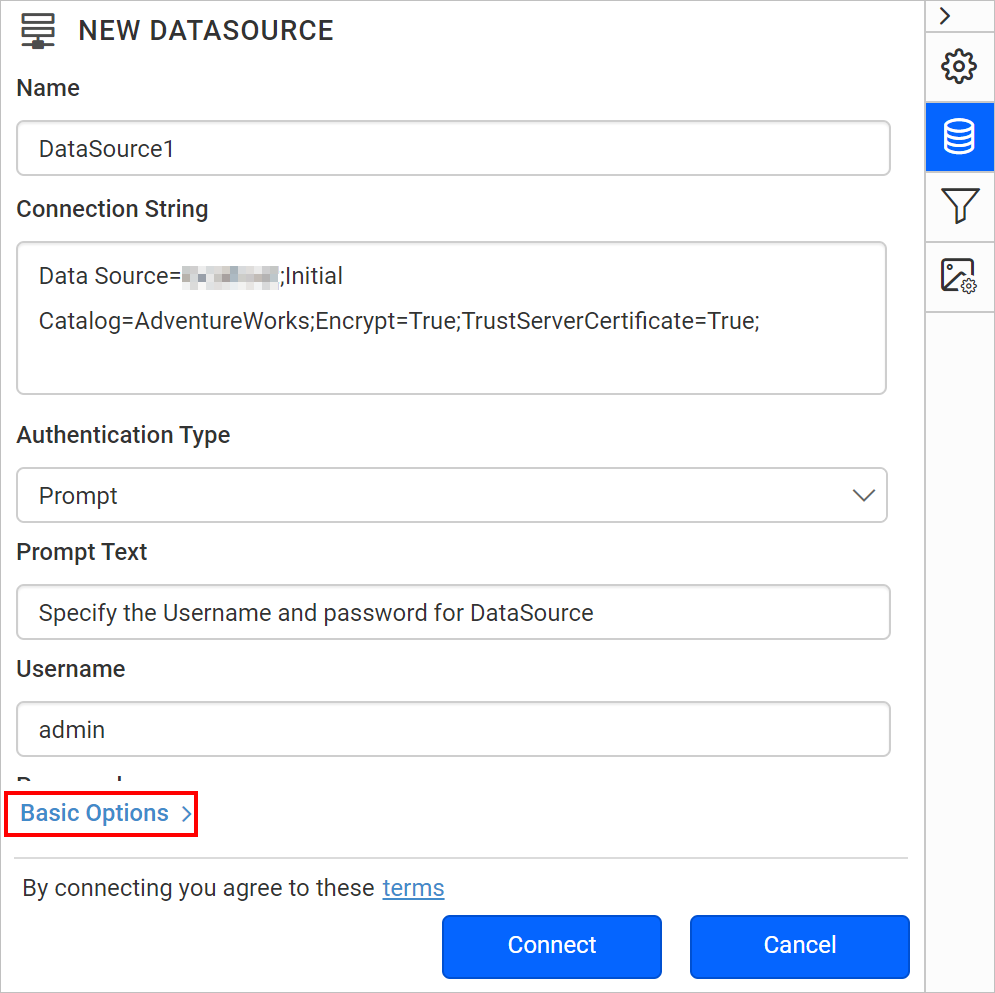
Connection string
Connection strings are the text representation of connection properties for a data provider.
If the database is located in the Azure SQL Server Database Engine and installed on your local computer. Specify connection string like below example,
Data source=<InstanceName>; initial catalog=AdventureWorks; Encrypt=True;TrustServerCertificate=True;
If database is located in any other server domain, specify connection string with or without credentials like below examples,
Data Source=myserver.domain.com;Initial Catalog=AdventureWorks;Encrypt=True;TrustServerCertificate=True;
Data Source=myserver.domain.com;Initial Catalog=AdventureWorks;user id=sa;password=sa@123;Encrypt=True;TrustServerCertificate=True;
Authentication types for advanced connection
You can use Azure SQL server credentials, prompted credentials, or use no credentials.

SQL Server - A user name and password must be supplied to access the Azure SQL Server database, the credentials might be for a database login. The credentials are passed to the data source for authentication.
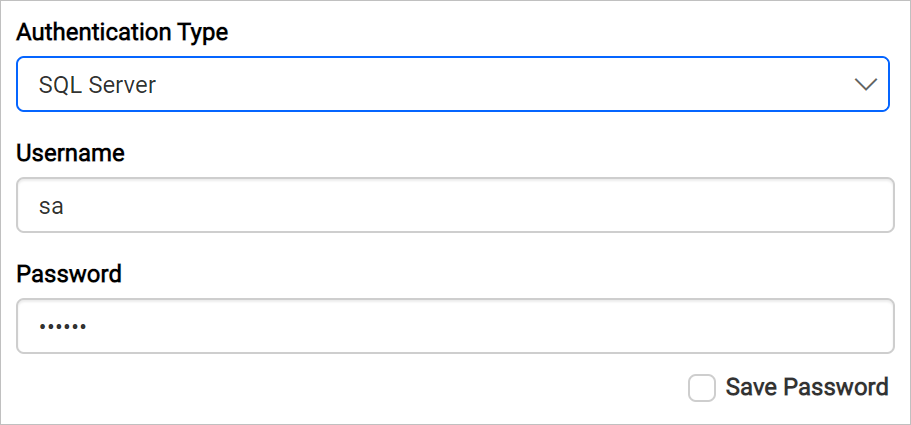
Enable the Save password option to embed the credentials within the report when saving it in Report Server.
On report download action, the credentials will be not be saved with report data.
Prompt - When you configure a data source connection to use prompted credentials, each user who access the report must enter a user name and password on preview action to retrieve the data.

None - Choose the authentication type as None, when the authentication details or any other arguments required to connect with the data source are provided in connection string.
Connecting through custom SQL query
You can connect to data source of certain data connections through the custom SQL query. This feature allows you to define the data source with manually written queries instead of manually dragged tables for data connection type such as Microsoft SQL connections.
Connect to the Azure SQL Server database with Basic Options or Advanced Options. After connect action, you will get into the query design view.
Switch to code view
By default, the query design view opens with design view. Switch to the code view by enabling the slider option in the tools pane in query design view as shown (highlighted) in the following image.

This will switch the query editor pane as like below,
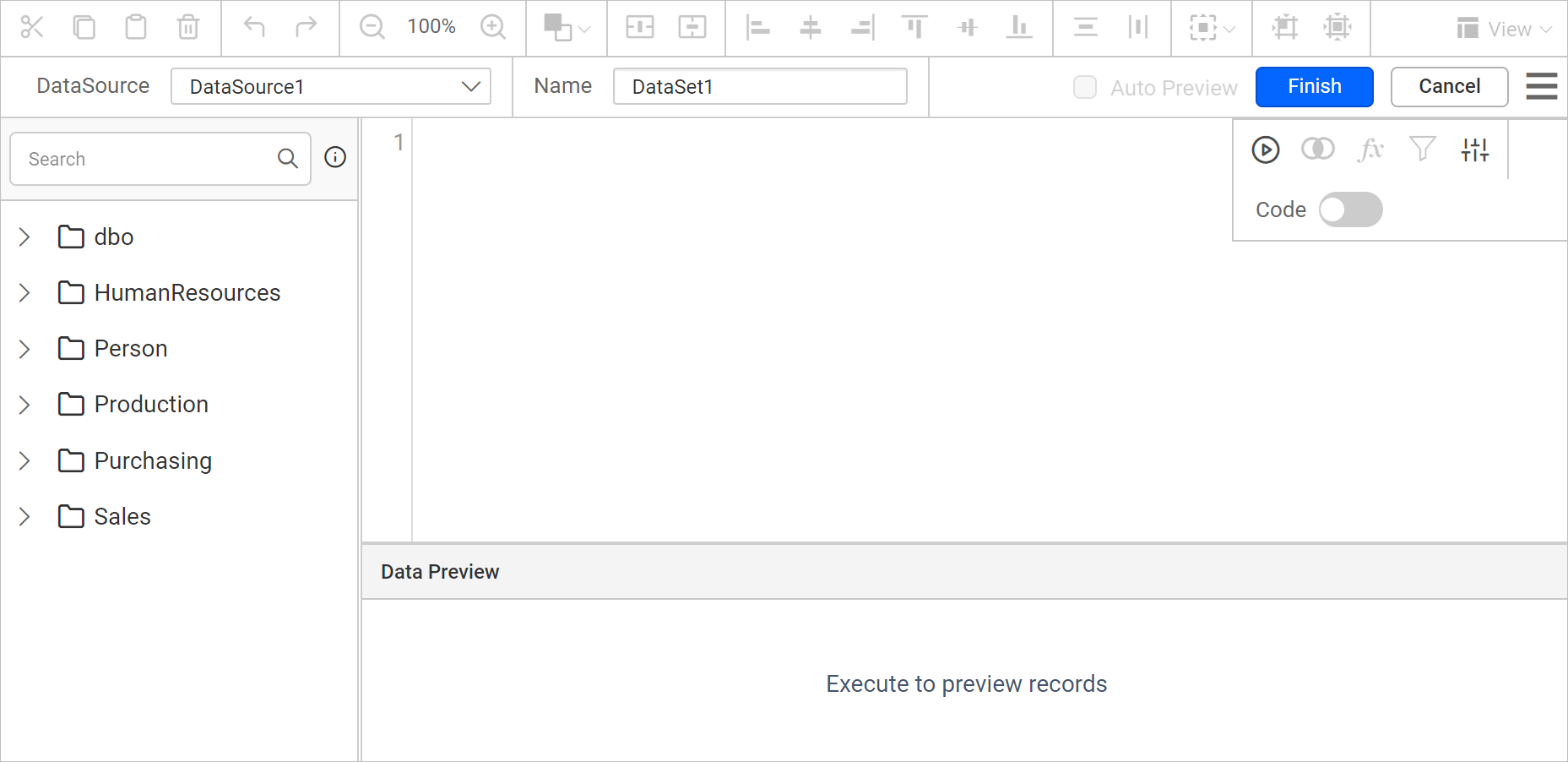
Write query and execute
In the Query Editor pane, you can write your own query which helps you to access table schema information and perform all the operations with respect to retrieving data from your database.
After writing your query, click the Execute option in the tools pane. You can also view the data for your query in bottom of the Query Editor.
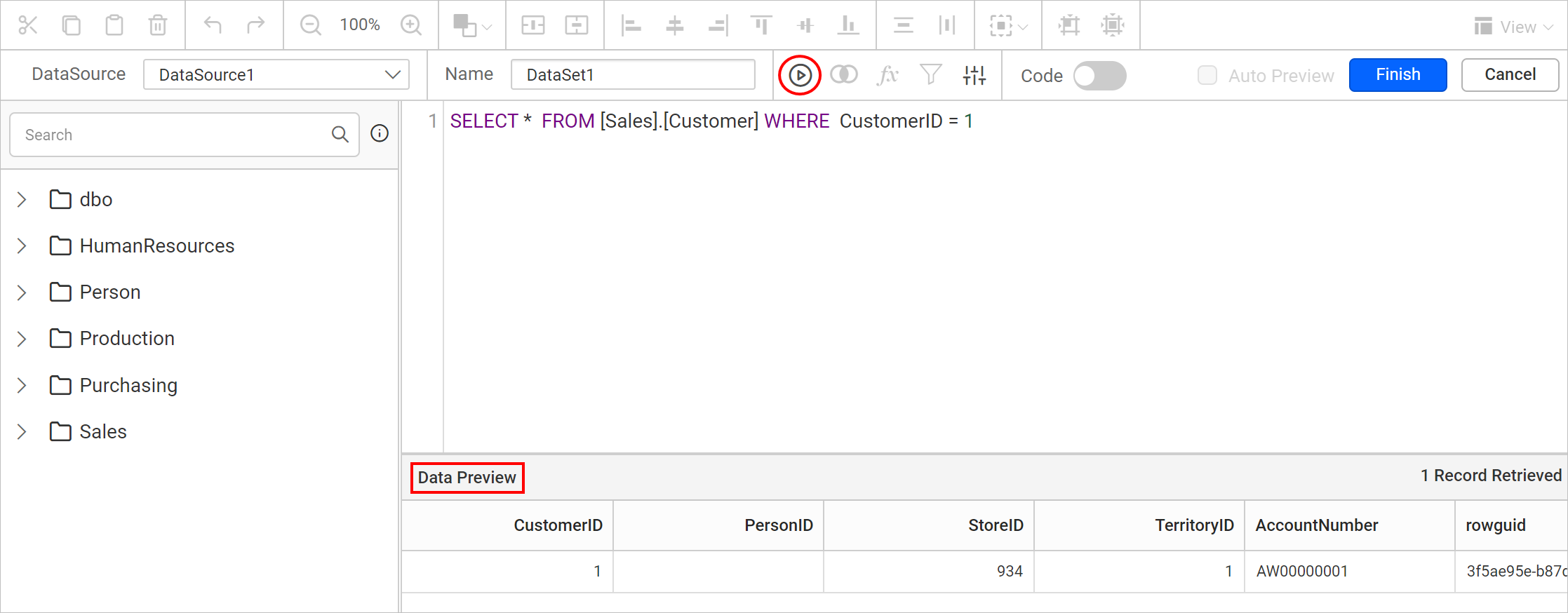
If you tried to switch back design view by disabling the Code Slider in tools pane, you will be prompted with an alert message to remove your query for confirmation as proceeding with this action, will reset the code view query.
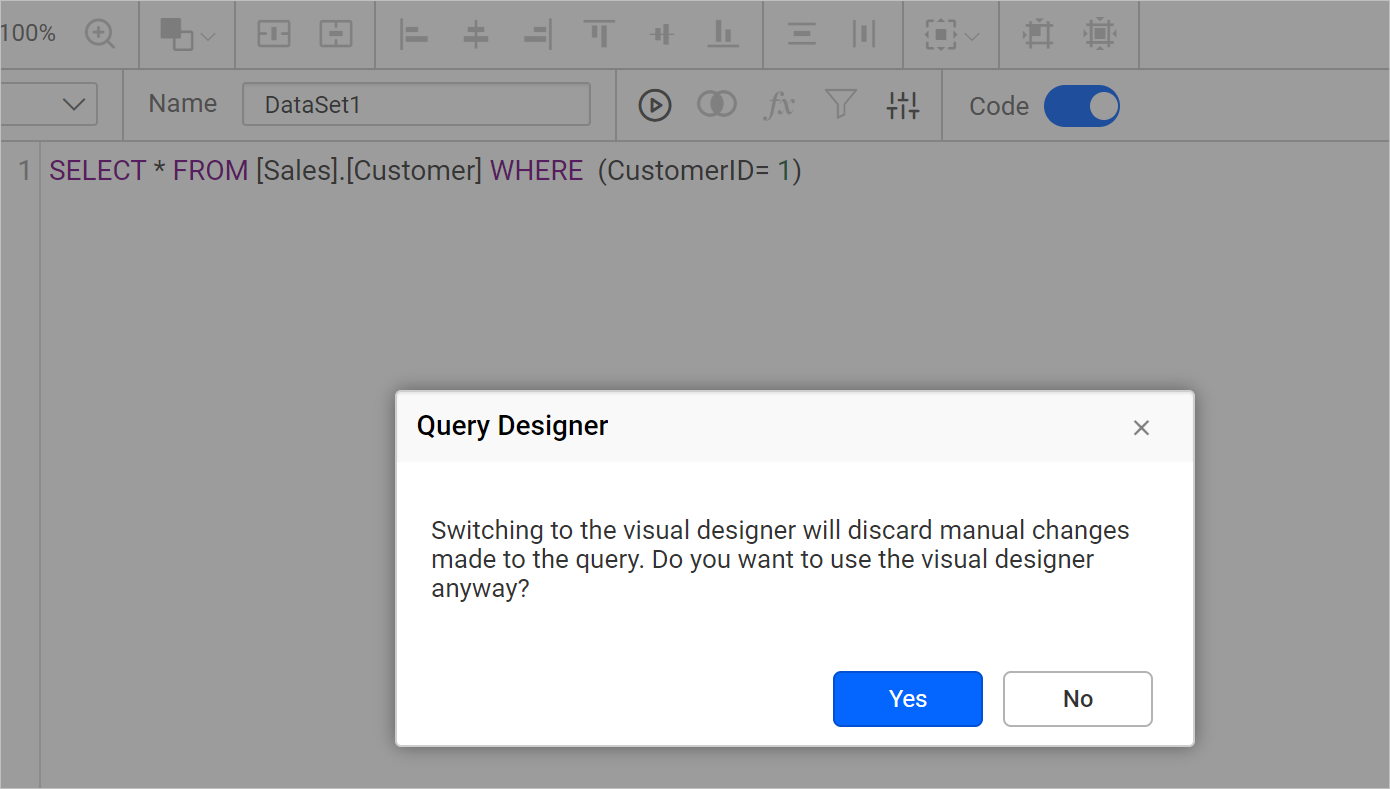
Clicking Yes will discard the query and take you to design view, otherwise click No. Save the data source by clicking the Finish button.
Code view for tables in design view
You can view the query in Query Editor pane for already created data source in design view.
For example, I have dragged the SalesOrderDetail table in design view and applied filters too.
Then, I tried to enable the Code Switcher to view the query, this query shows the applied filters and whatever changes that made in the table.

See also
- How to create Azure SQL Data Warehouse data source
- Create Azure SQL Data Warehouse data source with basic options
- Create Azure SQL Data Warehouse data source with advanced options
- Connection string
- Authentication types for advanced connection
- Connecting through custom SQL query
- Switch to code view
- Write query and execute
- Code view for tables in design view
- See also
- How to create Azure SQL Data Warehouse data source
- Create Azure SQL Data Warehouse data source with basic options
- Create Azure SQL Data Warehouse data source with advanced options
- Connection string
- Authentication types for advanced connection
- Connecting through custom SQL query
- Switch to code view
- Write query and execute
- Code view for tables in design view
- See also